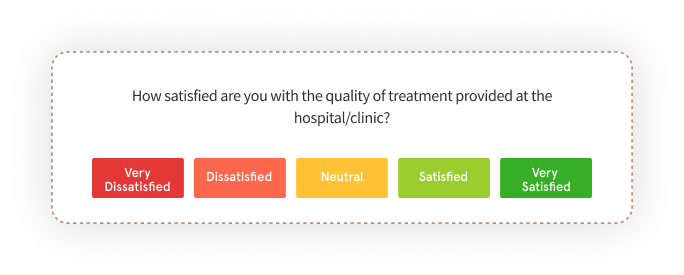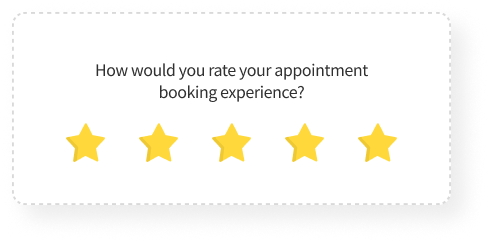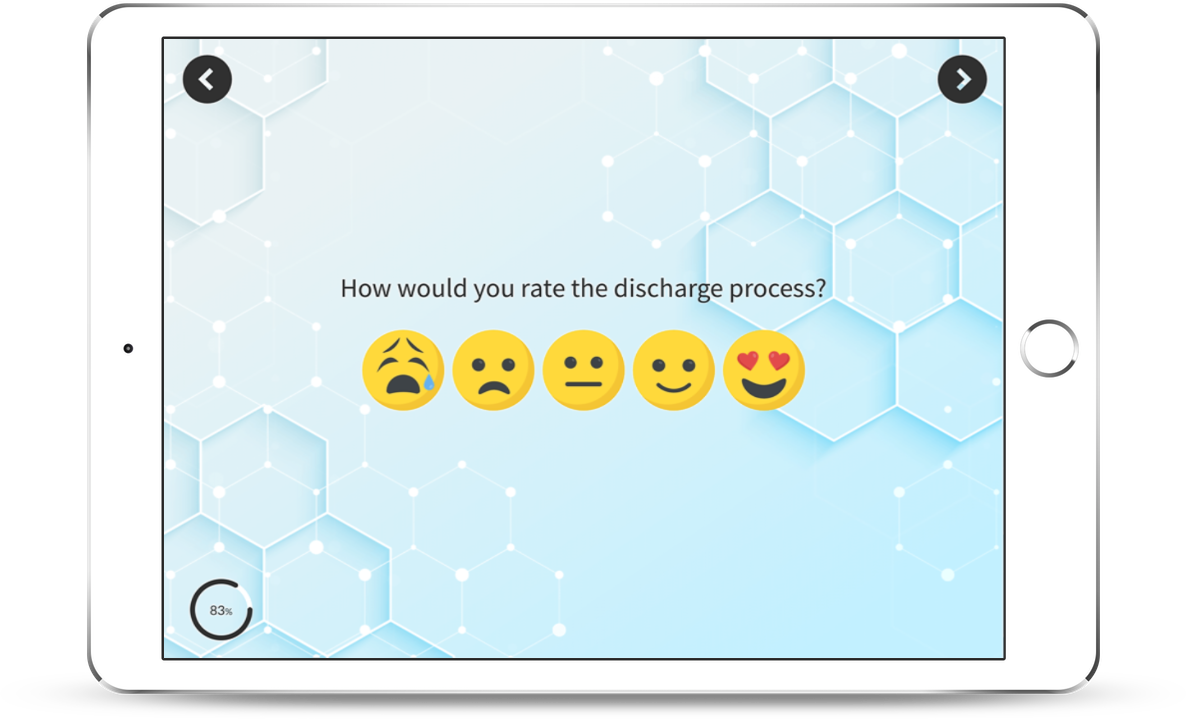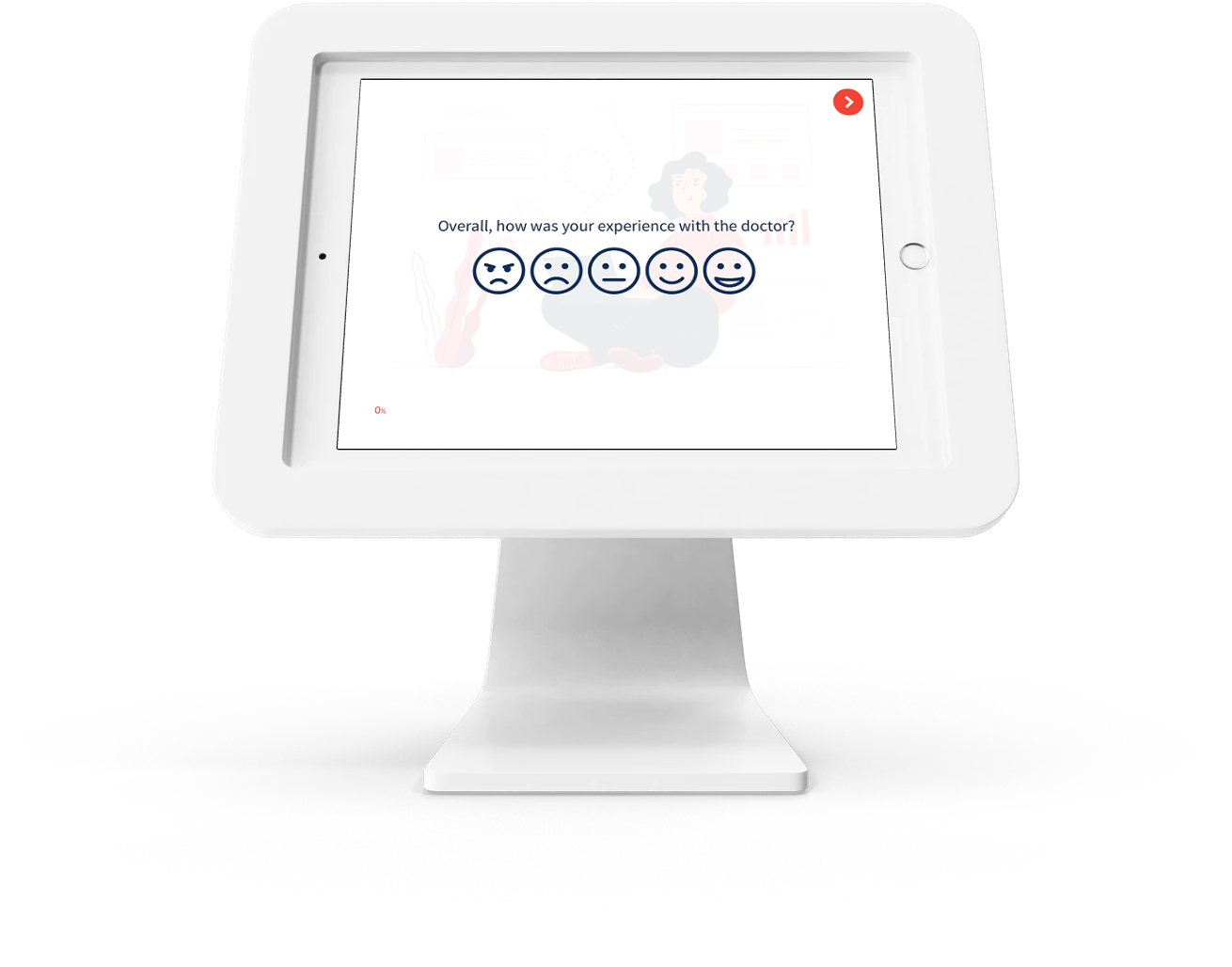Healthcare surveys have become an indispensable tool for healthcare providers, ranging from large hospital networks to small clinic owners. According to a Press Ganey report, healthcare organizations that actively collect and act on patient feedback see an average increase in patient satisfaction scores by 10%. These surveys capture valuable feedback from patients, providing insights into their experiences and expectations, which are crucial for identifying areas of improvement, enhancing patient satisfaction, and delivering higher-quality care.
Healthcare surveys are utilized in various aspects of patient care, including measuring patient satisfaction, monitoring the effectiveness of treatments, and ensuring compliance with healthcare standards. By systematically collecting and analyzing patient feedback, healthcare providers can make informed decisions that lead to better patient outcomes and operational efficiency.
In this article, we will explore the different types of healthcare surveys, their benefits, and the best practices for sharing and leveraging them effectively. We will also delve into how technology can enhance the process of collecting and utilizing patient feedback, ensuring a seamless and impactful experience management solution for healthcare providers.
TL;DR
- Healthcare surveys are crucial for gathering patient feedback, measuring satisfaction, and identifying areas for improvement to enhance patient care and satisfaction.
- These surveys help collect valuable patient feedback, identify areas needing improvement, ensure quality care, track staff performance, assess patient health, monitor patient outcomes, and measure patient satisfaction.
- Implementing healthcare surveys leads to improved patient care, enhanced patient satisfaction, better patient experiences, reduced legal risks, an enhanced reputation in the industry, increased patient loyalty, and new patients through positive reviews.
- Key types include Patient Satisfaction Surveys, Patient Experience Surveys, Physician Feedback Surveys, Post-Discharge Surveys, Healthcare Assessment Surveys, and Event-Specific Surveys, each designed to gather specific feedback and insights.
- Effective distribution channels include Kiosk Surveys, In-App Surveys, Website Surveys, Email Surveys, and SMS Surveys, each suitable for different touchpoints in the patient journey.
- Zonka Feedback is an advanced tool which offers AI-powered analytics, automated alerts, and multi-locational management, enhances the effectiveness of healthcare surveys and helps in making data-driven decisions.
Measure Patient Feedback and Satisfaction👩⚕️
Create your healthcare surveys and questionnaires and gauge feedback from patients in real time.

What are Healthcare Surveys?
Healthcare surveys are structured questionnaires designed to collect feedback from patients about their healthcare experiences. They cover various aspects of patient care, including satisfaction, quality of service, effectiveness of treatments, and overall patient health.
Collecting patient feedback through these surveys is crucial for healthcare providers. They help assess patient health, identify areas for improvement, enhance patient satisfaction, and ensure the quality of care. By understanding patient needs and expectations, healthcare providers can make informed, data-driven decisions, ultimately leading to better patient outcomes and a more patient-centered approach to healthcare.
Why are Healthcare Surveys Used?
Healthcare surveys are a vital tool for gathering insights and ensuring that your healthcare services meet the highest standards. By systematically collecting patient feedback, you can make informed decisions that lead to improved patient care and satisfaction. Here are some key reasons why healthcare surveys are essential:
1. To collect Patient Feedback
Surveys provide a structured way to gather valuable feedback from your patients about their experiences and perceptions of the care they receive. This feedback is crucial for understanding their needs and expectations. By listening to your patients, you can gain insights into what is working well and what areas may need attention, ultimately enhancing the overall patient experience.
2. To identify the areas of improvement
Analyzing survey responses helps you pinpoint specific areas where your services may need enhancement. This process allows you to address issues promptly and effectively, leading to continuous improvement in service delivery. Whether it's reducing wait times, improving communication, or enhancing the comfort of your facilities, patient feedback is instrumental in guiding these improvements.
3. To ensure quality care for patients
Monitoring and evaluating the quality of care through surveys ensures that your patients receive the best possible treatment and services. This commitment to quality helps maintain high standards and patient trust. Quality care not only improves patient outcomes but also builds a strong reputation for your healthcare facility, attracting more patients and fostering loyalty among existing ones.
4. To track staff competency and performance
Including questions about staff competency and performance in your surveys provides insights into training needs and recognizes outstanding performance, ensuring that your team meets the required standards of care. Regular feedback on staff performance helps create a culture of continuous learning and professional development, which is essential for maintaining high levels of care and patient satisfaction.
5. To assess patients’ health
Healthcare surveys with effective health survey questions can help you assess your patients' health conditions, monitor their progress, and evaluate the effectiveness of treatments. This ongoing assessment allows for proactive health management and necessary treatment adjustments. By tracking health outcomes over time, you can identify trends and make evidence-based decisions to improve patient care strategies.
6. To monitor and improve patient outcomes
Consistently collecting data on patient health and treatment outcomes helps identify trends and make necessary adjustments to improve overall patient outcomes. This data-driven approach ensures that your care is continually evolving and improving. By focusing on patient outcomes, you can enhance the effectiveness of your treatments and interventions, leading to better health results for your patients.
7. To measure and improve patient satisfaction
Patient satisfaction is a key indicator of the quality of your healthcare services. Surveys provide a direct measure of how satisfied your patients are, allowing you to make targeted improvements to enhance their experiences and build patient loyalty. Satisfied patients are more likely to adhere to treatment plans, return for future care, and recommend your services to others, contributing to the overall success and growth of your healthcare practice.
Let’s review some benefits of using healthcare surveys.
Benefits of Healthcare Surveys
Healthcare surveys offer numerous benefits that can significantly enhance the quality of care and overall patient experience. Here are some key advantages of implementing healthcare surveys in your practice:
-
Improved Patient Care - Healthcare surveys provide valuable feedback that helps identify gaps in service delivery and areas needing improvement. By addressing these issues, you can enhance the quality of care provided to patients, ensuring they receive the best possible treatment and attention.
-
Enhanced Patient Satisfaction - By systematically collecting and analyzing patient feedback, you can make informed decisions that directly improve patient satisfaction. When patients feel their concerns are heard and addressed, their overall satisfaction with your healthcare services increases, leading to more positive patient experiences.
-
Better Patient Experiences - Healthcare surveys help map out the entire patient journey, identifying critical touchpoints that impact patient experience. By improving these touchpoints based on survey feedback, you can create a more seamless and pleasant experience for your patients, from appointment scheduling to post-treatment follow-ups.
-
Reduced Legal Risks - Regularly collecting and acting on patient feedback can help identify potential issues before they escalate into serious problems. By proactively addressing concerns, you can reduce the risk of legal actions related to malpractice or negligence, safeguarding your practice from costly legal battles.
-
Enhanced Reputation in the industry - Consistently improving your services based on patient feedback demonstrates a commitment to high-quality care. This dedication to excellence enhances your reputation within the healthcare industry, making your practice a trusted choice for patients and other healthcare professionals.
-
Increased Patient Loyalty - When patients see that their feedback is valued and leads to tangible improvements, they are more likely to remain loyal to your practice. Increased patient loyalty translates into repeat visits and long-term relationships, which are crucial for the sustained success of your healthcare facility.
-
New Patients through Word of Mouth and positive reviews - Satisfied patients are more likely to recommend your services to family and friends, providing valuable word-of-mouth promotion. Positive reviews and high patient satisfaction scores also enhance your online presence, attracting new patients who are looking for reliable and quality healthcare services.
By leveraging the benefits of healthcare surveys, you can create a patient-centered approach that not only improves patient care and satisfaction but also strengthens your practice's reputation and growth in a competitive healthcare landscape.
Types of Healthcare Surveys
Healthcare surveys come in various forms, each designed to gather specific types of feedback and insights. These surveys are tailored to address different aspects of patient care and the overall healthcare experience. Here are some key types of healthcare surveys and their purposes:
1. Patient Satisfaction Survey
Patient satisfaction surveys measure how satisfied patients are with different aspects of their healthcare experience. These surveys typically cover areas such as the quality of care, communication with healthcare providers, wait times, facility cleanliness, and overall patient experience. By understanding patient satisfaction levels, you can identify strengths and areas needing improvement to enhance the quality of care and patient happiness.
 2. Patient Experience Surveys
2. Patient Experience Surveys
Patient experience surveys gauge the patient's journey through various touchpoints within the healthcare system. These touchpoints can include appointment scheduling, interactions with administrative staff, the quality of medical consultations, and follow-up care. By mapping out the patient journey, these surveys provide a comprehensive view of the patient experience, helping you identify and improve critical moments that impact overall satisfaction.
 3. Physician Feedback Survey
3. Physician Feedback Survey
Physician feedback surveys are administered after patient interactions with doctors. These surveys focus on the quality of care provided by physicians, including their communication skills, professionalism, and the thoroughness of their consultations. Gathering feedback on doctor-patient interactions helps ensure that physicians meet patient expectations and adhere to high standards of care.
4. Post-Discharge Survey
Post-discharge surveys collect feedback from patients after they have been discharged from the hospital. These surveys assess the overall treatment and hospital stay, including the effectiveness of the care provided, the comfort of the facilities, and the discharge process. Feedback from post-discharge surveys can highlight areas for improvement in hospital operations and patient care during and after their stay.
 5. Healthcare Assessment Survey
5. Healthcare Assessment Survey
Healthcare assessment surveys are designed to assess patients' health and health outcomes. These surveys collect data on patients' health conditions, progress, and treatment effectiveness. By continuously monitoring health outcomes, healthcare providers can make informed decisions to adjust treatment plans and improve patient care strategies, leading to better health results.
6. Event-Specific Survey
Event-specific surveys are conducted after a particular event, such as an operation or surgery. These surveys gather feedback on the patient's experience related to that specific event, including pre-operative care, the surgical procedure, and post-operative recovery. Event-specific surveys help identify any issues or successes in the care process, providing valuable insights to improve future patient experiences and outcomes.
By utilizing these different types of healthcare surveys, you can gain a comprehensive understanding of patient experiences and satisfaction, ensuring that your healthcare services are continuously improving and meeting the needs of your patients.
Designing Effective Healthcare Surveys
Creating effective healthcare surveys is crucial to capturing accurate and actionable patient feedback. A well-designed survey can provide deep insights into patient experiences, satisfaction, and areas for improvement. Here are the key steps to creating impactful healthcare surveys:
1. Define Clear Objectives
Before designing the survey, it is essential to establish clear objectives. Determine what you want to achieve with the survey, whether it is measuring patient satisfaction, assessing the quality of care, or identifying areas for improvement. Clear objectives guide the creation of questions and ensure the survey focuses on gathering relevant data.
2. Choose the Right Tool
Selecting a tool with ready-to-use, customizable templates can significantly streamline the survey creation process. Tools like Zonka Feedback offer templates tailored to various healthcare needs, ensuring that you can quickly create surveys that address your specific objectives.
3. Choose the Right Type of Survey
Select the type of survey that aligns with your objectives. Common types of healthcare surveys include:
- Patient Satisfaction Surveys: Measure overall patient satisfaction with services.
- Patient Experience Surveys: Evaluate specific aspects of the patient journey.
- Post-Discharge Surveys: Collect feedback on the hospital stay and discharge process.
- Event-Specific Surveys: Focus on experiences related to particular medical events, such as surgeries.
4. Design Effective Questions
The questions in your survey should be clear, concise, and relevant to your objectives. Here are some tips for designing effective questions:
- Use Simple Language: Avoid medical jargon and ensure that all patients can understand the questions.
- Keep it Short: Limit the number of questions to avoid survey fatigue. Aim for a survey that can be completed in 5-10 minutes.
- Include a Mix of Question Types: Use a variety of question types, such as multiple-choice, Likert scale, and open-ended questions, to gather both quantitative and qualitative data.
5. Make your Surveys Conversational
Incorporate advanced features like skip logic, question branching, and survey redirection to make your surveys more conversational and dynamic. These features help tailor the survey experience to each respondent, ensuring that they only answer questions relevant to their experiences, which can lead to more accurate and insightful responses.
6. Ensure Anonymity and Confidentiality
Patients are more likely to provide honest feedback if they know their responses are anonymous and confidential. Clearly communicate how the data will be used and the measures in place to protect their privacy.
7. Pilot Test the Survey
Before full deployment, pilot test the survey with a small group of patients to identify any issues with the questions or the survey format. Use the feedback to make necessary adjustments.
Methods of Administering Healthcare Surveys
Effective distribution of healthcare surveys is crucial for gathering comprehensive and actionable feedback. Different channels and touchpoints can be used to maximize response rates and ensure the feedback collected is representative of the patient population. Here are some ways to share healthcare surveys and the touchpoints at which they are most suitable:
1. In-Person Surveys
In-person surveys are a direct way to collect patient feedback during their visit to the healthcare facility. Utilizing devices like tablets and smartphones can streamline the process, making it convenient for both patients and staff. By sharing face-to-face surveys through these devices at key locations such as reception areas, waiting rooms, or at the point of care, you can easily collect feedback from your patients while their experience is fresh in their minds. This method ensures high-quality, immediate feedback and can enhance patient engagement.
2. Kiosk Surveys
Kiosk surveys are ideal for collecting feedback immediately after a patient's visit or treatment. Placing kiosks in waiting areas, reception desks, or discharge lounges allows patients to provide their feedback while their experience is still fresh in their minds.
This method is particularly effective in capturing real-time insights about the quality of care, facility conditions, and staff interactions.
 2. In-Product Surveys
2. In-Product Surveys
In-product surveys are perfect for tech-savvy patients who use mobile applications to manage their healthcare appointments, access medical records, or communicate with healthcare providers.
These surveys can be triggered after specific interactions within the app, such as booking an appointment, completing a telehealth session, or receiving test results. In-app surveys offer convenience and can capture detailed feedback at various stages of the patient journey.
3. Website Surveys
Website surveys are useful for gathering feedback from patients who visit your healthcare facility's website. These surveys can be presented as pop-ups or embedded forms on relevant pages, such as after scheduling an appointment, accessing patient portals, or viewing health information. Website surveys are effective for reaching a broad audience and collecting insights on the online experience and service accessibility.
4. Digital Surveys
Digital surveys encompass methods like email and SMS surveys, providing a versatile and widely used method for collecting patient feedback.
- Email Surveys: Email surveys can be sent after specific events, such as post-appointment, post-discharge, or after a treatment cycle. They allow patients to provide detailed feedback at their convenience and can include reminders to increase response rates. This method is particularly useful for gathering comprehensive insights and following up on patient experiences over time.
- SMS Surveys: SMS surveys are highly effective for reaching patients quickly and conveniently. They are suitable for short, time-sensitive feedback requests, such as post-visit satisfaction, appointment reminders, or quick health check-ins. SMS surveys are particularly useful for capturing immediate reactions and quick responses, making them ideal for gauging patient sentiment shortly after key interactions.
Leveraging Technology for Effective Healthcare Surveys
Modern healthcare surveys have been revolutionized by advanced AI-powered patient feedback tools like Zonka Feedback. These tools not only simplify the process of collecting and analyzing patient feedback but also provide powerful features that enhance the overall effectiveness of your surveys. Here are some key technological advancements and their benefits:
1. AI and Analytics
Advanced AI analytical features, such as Sentiment Analysis and Text Analytics, transform raw patient feedback into actionable insights. Sentiment Analysis helps in understanding the emotional tone of patient responses, categorizing feedback into positive, negative, or neutral sentiments. Text Analytics dives deeper into the textual feedback to identify common themes, trends, and specific areas of concern. This intelligent analysis enables you to quickly grasp patient sentiments and make informed decisions to improve patient care and satisfaction.
2. Automated Alerts and Workflow Integration
Setting up automated alerts for negative feedback ensures that critical issues are addressed promptly. Whenever a patient leaves a negative comment, the system can automatically notify the relevant staff, enabling immediate action. Integrating feedback into existing workflows ensures that responses are timely and effective, enhancing patient satisfaction. For example, if a patient reports a long wait time, the feedback can be routed directly to the administrative team for immediate resolution. This seamless integration of feedback into daily operations fosters a proactive approach to patient care.
3. Multi-Locational Management
For large healthcare enterprises with multiple locations, managing surveys across all sites can be challenging. AI-powered tools like Zonka Feedback offer centralized data collection and analysis, making it easier to manage feedback from various locations. This feature ensures consistency in survey administration and allows for comprehensive data analysis across the entire organization. By centralizing the feedback process, healthcare providers can gain a holistic view of patient experiences and identify location-specific issues, ensuring uniform quality of care across all sites.
Leveraging these technological advancements in patient feedback tools ensures that your healthcare surveys are not only effective but also efficient. By utilizing AI and analytics, automated alerts, workflow integration, and multi-locational management, you can significantly enhance the quality of patient care, improve satisfaction, and streamline operations across your healthcare enterprise.
Applying Insights to Improve Care and Overall Experience
Once you have collected patient feedback through various survey methods, the next crucial step is to apply these insights to improve the quality of care and overall patient experience. Here are some key strategies for effectively using patient feedback to drive improvements:
1. Analyze Feedback Thoroughly
Begin by systematically analyzing the feedback collected from surveys. Use advanced analytics tools to identify common themes, trends, and specific areas that require attention. Survey reports can help in visualizing data and understanding the overall patient sentiment, enabling you to pinpoint specific issues that need to be addressed. These reports should be detailed, highlighting key areas of concern and suggesting potential action steps.
2. Integrate Survey Feedback into Clinical Practice
Integrating feedback into clinical practice is essential for meaningful improvements. Share the insights from patient surveys with clinical staff and incorporate them into training programs and daily routines. This helps ensure that the feedback is not only acknowledged but also acted upon in practical ways to enhance patient care.
3. Prioritize Key Areas for Improvement
Not all feedback will have the same level of urgency. Focus on issues that recur frequently or have a considerable influence on the patient experience, such as wait times, communication with healthcare providers, and the comfort of facilities. Prioritize areas that significantly impact patient satisfaction and care quality.
4. Address Common Patient Concerns and Issues
Develop strategies to address common patient concerns based on feedback. For instance, if patients express dissatisfaction with communication, healthcare providers can undergo training to improve their communication skills. Addressing such concerns directly improves the patient experience and builds trust. It's crucial to prioritize issues that significantly impact patient satisfaction and care quality.
5. Engage your Team and Develop Actionable Improvement Plans
Engage healthcare providers and staff in the improvement process. Share feedback insights with them and encourage their participation in developing and implementing solutions. Training sessions and workshops can help staff understand the importance of patient feedback and how to use it to enhance care delivery.
Create specific, actionable plans to address the identified issues. Set clear, measurable goals and timelines for implementing changes. For example, if patients frequently mention long wait times, consider optimizing scheduling processes or increasing staffing during peak hours.
6. Take Action and Close the Feedback Loop
Put the improvement plans into action and monitor progress regularly. Also, communicate these changes back to the patients. Closing the feedback loop by informing patients about the actions taken based on their feedback builds trust and shows a commitment to continuous improvement.
Use follow-up surveys to gauge the effectiveness of the changes made and to gather further feedback. Continuous monitoring helps ensure that the improvements are effective and sustained over time.
7. Showcase Examples of Care Improvements
Highlight specific examples of care improvements driven by patient feedback. For instance, a hospital might reduce its average wait time by 20% after implementing new scheduling software, or a clinic might see a significant increase in patient satisfaction scores after enhancing its patient-provider communication protocols. Sharing these success stories can motivate staff and demonstrate the tangible benefits of acting on patient feedback.
Encourage staff to be proactive in seeking feedback and coming up with innovative solutions to enhance patient care and foster a culture of continuous improvement. This proactive approach not only addresses immediate concerns but also fosters long-term loyalty and trust, ultimately contributing to a more patient-centred healthcare environment.
Some Best Practices to Conduct Healthcare Surveys
Implementing healthcare surveys effectively requires careful planning and execution. Following best practices ensures that the feedback collected is valuable, actionable, and contributes to the continuous improvement of patient care. Here are some key best practices to consider:
-
Define Clear Objectives: Establish specific goals for your survey to ensure it aligns with your improvement strategies. Whether you aim to measure patient satisfaction or gather feedback on specific services, clear objectives guide the survey design.
-
Keep Surveys Short and Focused: Limit the number of questions to keep the survey concise and respect patients’ time. Focus on relevant questions that directly relate to your objectives to increase response rates and accuracy.
-
Use Simple and Clear Language: Avoid medical jargon and ensure questions are easy to understand for all patients. Simple and clear language helps prevent confusion and ensures meaningful feedback from diverse patient backgrounds.
-
Offer Multiple Survey Channels: Increase accessibility by providing surveys through online, mobile apps, email, SMS, and in-person kiosks. Offering multiple channels ensures that patients can choose the most convenient method for them.
-
Ensure Anonymity and Confidentiality: Communicate clearly about data protection to encourage honest feedback. Reassure patients that their responses are anonymous and confidential, which promotes openness and honesty in their answers.
-
Act on Feedback Promptly: Address issues raised and communicate improvements made to build trust and show commitment to quality care. Prompt action demonstrates to patients that their feedback is valued and leads to real changes.
-
Use Effective Patient Feedback Software: Implement advanced patient feedback software to streamline survey administration, analyze responses, and generate actionable insights. Effective tools help automate processes, integrate feedback into workflows, and provide powerful analytics to enhance patient care.
By following these best practices, you can conduct healthcare surveys that provide valuable insights, drive improvements in patient care, and enhance overall patient satisfaction.
Conduct Effective Healthcare Surveys with Zonka Feedback
Healthcare surveys are invaluable tools for gathering patient feedback, measuring satisfaction, and identifying areas for improvement. By effectively utilizing these surveys, you can ensure high-quality care, enhance patient experiences, and foster continuous improvement in your healthcare practice. Patient feedback provides the insights needed to make informed decisions, ultimately leading to better patient outcomes and greater satisfaction.
Leveraging an effective software tool is essential for conducting impactful healthcare surveys. Zonka Feedback stands out as a powerful solution designed to streamline the process of collecting, analyzing, and acting on patient feedback. Its comprehensive features ensure that you gather valuable insights efficiently, helping you enhance patient care and satisfaction.
Zonka Feedback offers advanced capabilities such as AI-powered analytics, automated alerts, and multi-locational management, making it an ideal choice for healthcare providers. With its user-friendly interface and robust reporting tools, you can easily customize surveys, track responses in real-time, and generate actionable insights to drive continuous improvement in your services.
Schedule a demo and see how it can transform your patient feedback process, ultimately leading to better patient outcomes and a more efficient healthcare practice.




.jpg)




.png)

.jpg)